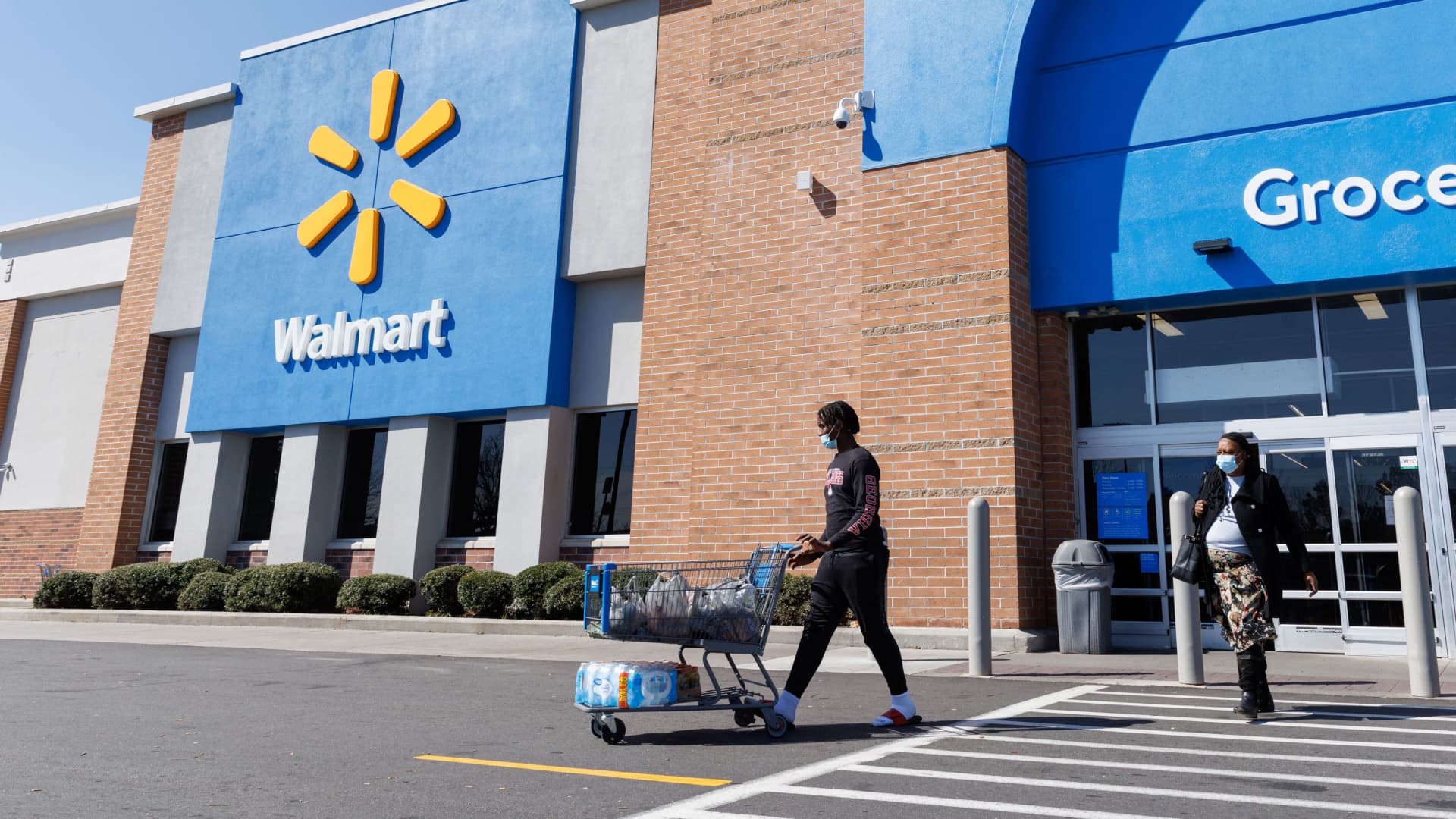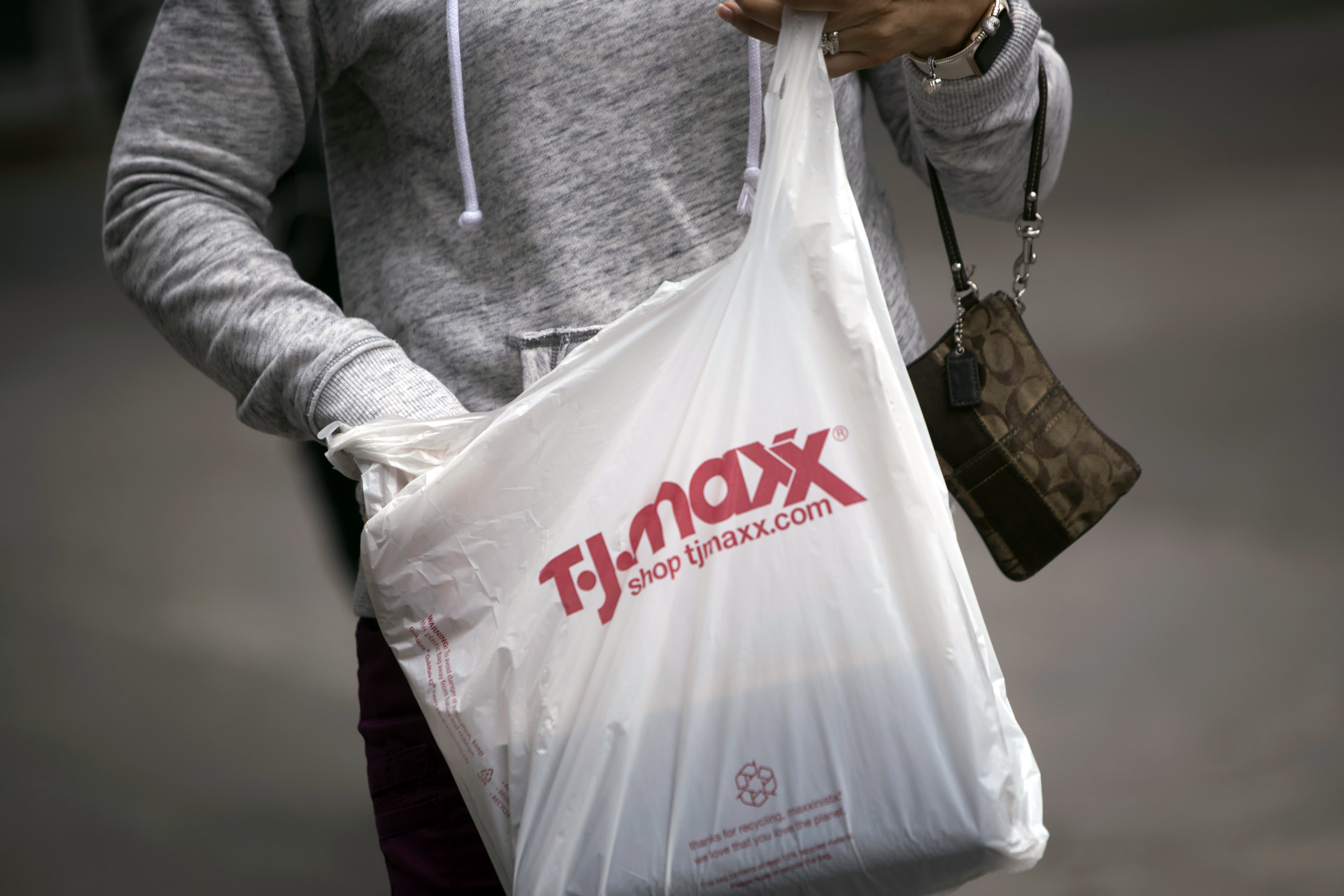Walmart raised its full-year forecast Thursday, as fiscal first-quarter sales rose nearly 8% and its large grocery business helped offset weaker sales of clothing and electronics.
Shares of the company rose about 3% in premarket trading, as the company beat Wall Street’s earnings and revenue expectations.
related investing news
Walmart lifted its guidance to reflect the earnings beat. It said it now anticipates consolidated net sales will rise about 3.5% in the fiscal year. It expects adjusted earnings per share for the full year will be between $6.10 and $6.20, roughly in line with analysts’ expectations, according to Refinitiv.
Chief Financial Officer John David Rainey said consumers are trading down to smaller pack sizes, buying fewer discretionary items and waiting for promotions before making pricey purchases like TVs.
Yet shoppers are still spending, he added.
“We’re seeing in these economic indicators that there is some strain on the consumer, but the resilience has surprised us,” he told CNBC. “And I think that’s in part probably because balance sheets are much stronger than they were pre-pandemic, even at this point.”
Here’s what Walmart reported for the three-month period that ended April 30, according to Refinitiv consensus estimates:
- Earnings per share: $1.47 adjusted vs. $1.32 expected
- Revenue: $152.30 billion vs. $148.76 billion expected
Walmart’s quarterly results provided the latest snapshot of the health of the American consumer. Earlier this week, Home Depot and Target said that shoppers were buying fewer big-ticket and discretionary items as they paid more for necessities.
Walmart’s sales reflected that shift toward groceries and essentials, too, Rainey said. The big-box retailer is well suited for that change as the nation’s largest grocer.
Nearly 60% of its annual U.S. sales come from groceries. The mix, however, weighed on the company’s first-quarter gross margin rate, which declined year over year, since food has slimmer margins than other merchandise. Sales of general merchandise in the U.S. declined mid single-digits, while sales of food and consumables increased low double-digits, Rainey said on an investor call.
Net income for the big-box retailer fell to $1.67 billion, or 62 cents per share, compared with $2.05 billion, or 74 cents per share, a year earlier.
Total revenue rose to $152.30 billion from $141.57 billion in the year-ago period, beating Wall Street’s expectations.
Same-store sales for Walmart U.S. climbed 7.4%, excluding fuel. The key industry metric includes sales from stores and clubs open for at least a year. E-commerce sales jumped 27% year over year for Walmart U.S.
At Sam’s Club, same-store sales rose 7% year over year excluding fuel, driven by grocery sales. Its e-commerce sales grew 19%, led by curbside pickup.
Despite the sales growth, Rainey said spending trends weakened as the quarter went on, with the sharpest drop after February. He attributed that, in part, to the end of pandemic-related emergency funding from the Supplemental Nutrition Assistance Program and a decline in tax refund amounts.
On a call with investors, CEO Doug McMillon said persistently higher prices on everyday items like food and paper goods continue to squeeze families’ budgets, leaving less money to spend in other ways.
He said that stubborn inflation “is one of the key factors creating uncertainty for us in the back half of the year.”
Walmart said for the fiscal second quarter, it expects consolidated net sales to increase about 4% and adjusted earnings per share to range between $1.63 and $1.68. That is lower than the $1.71 per share that Wall Street expected, according to Refinitiv consensus estimates.
Shares of Walmart closed Wednesday at $149.53, bringing its market value to $403.33 billion. Its stock has climbed nearly 6% year to date. The shares have trailed the S&P 500′s roughly 8% gain but are ahead of the retail-focused XRT‘s nearly 2% rise during the same period.
Correction: Walmart’s shares have trailed the S&P 500′s roughly 8% gain but are ahead of the retail-focused XRT’s nearly 2% rise during the same period. An earlier version misstated their status.




